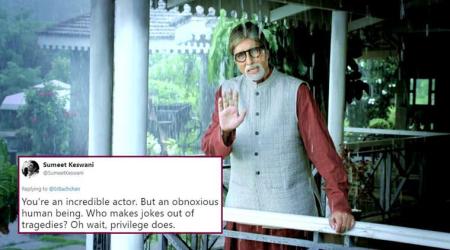 With an insider’s confidence, he fleshes out a well-known and oft documented chronology with stories that illustrate the repetitive pattern of the relationship between hostility and goodwill, and how, with each cycle, the past comes back in new ways to become the present.
With an insider’s confidence, he fleshes out a well-known and oft documented chronology with stories that illustrate the repetitive pattern of the relationship between hostility and goodwill, and how, with each cycle, the past comes back in new ways to become the present.
Book Name – The People Next Door: The Curious History of India’s Relations with Pakistan
Author – T.C.A. Raghavan
Publisher – Harper Collins
Pages – 360 pages
Price – Rs 699
When diplomats retire, some go on to write a book, and usually, it’s a memoir. TCA Raghavan, who was our man in Islamabad when he retired in 2016, has been prolific and written two books in the short span of a year, but neither is a my-life-in-Pakistan. The historian in him came out instead, this year, with Attendant Lords: Bairam Khan and Abdur Rahim, Poets and Courtiers in Mughal India, about a father and son, both noblemen, who, between them, covered a century of the Mughal court. His second book is on India-Pakistan relations, but don’t go flipping the pages for “I was asked to fly out to Lahore from Islamabad at the last minute to receive Prime Minister Modi as he landed there in December 2015 to meet Nawaz Sharif”, because it’s not there.
Instead, what you get is an engagingly written anecdotal history — “not policy”, the author stresses — for which he pulls together a rich cast of characters small and big, stories mined from other people’s memoirs and practically everything else written on the subject. Raghavan was in Islamabad in two stints, and in between manned the famous PAI (Pakistan-Afghanistan-Iran) desk at the Ministry of External Affairs, so he not only had a ringside view of many riveting episodes between the two countries in the last dozen or so years, he also played a prominent part in them. But he keeps himself scrupulously out of the telling, relishing his role as a sutradhar.
With an insider’s confidence, he fleshes out a well-known and oft documented chronology with stories that illustrate the repetitive pattern of the relationship between hostility and goodwill, and how, with each cycle, the past comes back in new ways to become the present.
Take for instance the story of “an old fashioned dacoit”, Bhupat Daku, an early forerunner to the Dawood Ibrahim saga between the two countries, who smelt survival in becoming a cog in the India-Pakistan wheel. Wanted by the police in Saurashtra in Gujarat, he crossed over the border and was arrested.
There was no extradition treaty, then as now, between the two countries. The more India wanted him back, and the higher the levels at which his return was taken up, the less Pakistan wanted to send him back. The Indian High Commissioner to Pakistan noted that the Pakistani government was too weak to ignore public opinion and just hand him over. If all this sounds familiar, read on. Stories began to appear in Indian newspapers about how he was recruiting Indian dacoits for the Pakistan Army. In Pakistan, he became “a freedom fighter fighting for the independence of Saurashtra” and promised in court to give every drop of blood for the “maintenance” of Pakistan. He stayed in Pakistan till his reported death in 2006.
“Bhupat,” the author writes, “is important not so much for his notoriety and the drama associated with his stay in Pakistan but for the parallels his now obscure case provides for other individuals in the decades to come.”
Among the most interestingly narrated stories in the book is that of KL Gauba, the son of a wealthy Hindu businessman in pre-Partition Lahore, who studied to become a lawyer, and was a “genuine sensationalist”. He shocked his Punjabi Hindu family and Lahore high society by marrying a Muslim girl, opposed the idea of Pakistan, and earned lasting fame for his book Uncle Sham, a response to Katherine Mayo’s Mother India, that had outraged every Indian from Gandhi down. MC Chagla was to comment that Mayo had found her match in Gauba, who sent the American author a copy with the inscription: “From one Drain Inspector to another.” At Partition he moved to India, and decades later, he was to pen a book on the plight of Muslims in India, which Raghavan notes was a forerunner to the Sachar Commission report. For this, he got a warm welcome in Bhutto’s Pakistan when he visited.
The book also illustrates how the interaction between the two sides over the decades in a spectrum of situations from war to peace, range from the extremely hostile — as when an uncouth Pakistani foreign secretary shouted madly at the Indian High Commissioner — to the extremely polite; and always, there’s the presence of the past.
The Kutch agreement of June 1965, after the April India-Pakistan clashes that year on the Gujarat-Sindh border, was signed by Azim Husain, secretary in the Ministry of External Affairs, and Mian Arshad Hussain, his cousin and brother-in-law, then the Pakistan high commissioner in India. Azim Husain’s decision to choose India over Pakistan at Partition is a story by itself.
In 1955, Malik Ghulam Muhammad, Governor General of Pakistan, came for the Republic Day celebrations, and took his motorcade off to visit an old friend, the wife of a chemistry professor at Delhi University whom he called “Sada Bahar”. But Raghavan recalls that visit also to make a point of how the Kashmir issue has taken on layers over the decades while still remaining the same. Ghulam Muhammed had brought his own four point to discuss, decades before Musharraf announced a separate set of four.
The 1965 war, as Raghavan notes, still divides Pakistan and India over who did what to whom, and even when it actually began. At the time, the two High Commissioners in each other’s capitals were not even sure if war had been declared. The war itself, nasty though it was, brought out even more curiosities, such as “opposing units on either side discover[ing] old regimental friends, colleagues and acquaintances…”
When they are not fighting, Indians and Pakistanis are of course killing each other with politeness and humbug guftagoo. Natwar Singh is quoted in the book recalling how he, as High Commissioner, when General Zia ul Haq was ruling Pakistan, “frequently assaulted each other with good manners” and engaged in “a mutually fruitless play of words.”
“Kunwar Sahib, Kashmir is in my blood,” Zia told Natwar Singh, whose equally polite reply was: “Sir, Kashmir is in my bone marrow”. But the cake for politeness goes to President Ayub Khan and Prime Minister Lal Bahadur Shastri, in Tashkent, where, in a 35- word exchange, they captured between them an entire swathe of the India-Pakistan saga.
“President Ayub: ‘Kashmir ke mamle men kuchh aisa kar deejiye ki main bhi apne mulk men munh dikhane ke qabil rahoon.’ (Please do agree to some arrangement about the Kashmir question so that I am able to show my face to my people.) Prime Minister Shastri: ‘Sadar Saheb, main bahut muafi chahta hoon ki main is mamle men apki koi khidmat nahin kar sakta.’ (Mr President, I apologise profusely that in this matter I cannot be of any service to you.)”
This book is a hugely informative, accessible and entertaining read on seven decades of what is finally a failure — of war, peace, diplomacy and politics, and those who practice them — to resolve anything. The best one can do is to write entertainingly about it, and see if there is something to learn from the sorry mess. As relations teeter between good, bad and ugly in cycles, Raghavan says hawks or doves are not important in the India-Pakistan story, as “at some stage and for some period of time each camp will be proven right before it is again proven wrong”.
Raghavan writes elegantly, with a sense of humour that comes with detachment and the sentiment that this too shall pass, only to be repeated again. However, we still await the memoir.

